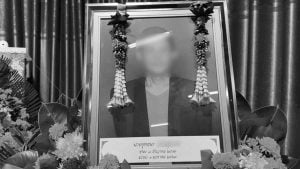Czech gold for future generations?

Jilove u Prahy is a picturesque town with almost 5,000 inhabitants and a great many historical monuments. This region, along the River Sazava, a tributary of the Vltava near Prague, is a popular recreational area for citizens of the Czech capital.
In the 14th century, Jilove u Prahy was the third-most-important town in the kingdom of Bohemia, after Prague and Kutna Hora, and its population was more than double that of today. Back then, King Charles IV of Bohemia (1355-1378) was Holy Roman Emperor, and during his reign Jilove was the empire’s most important source of gold.
“A large part of the city of Prague was built from the proceeds of gold mining, including some of the buildings of Charles University that still stand today,” says Sarka Jurinova, director of the Regional Museum in Jilove u Prahy, which houses a large exhibition on gold mining.
“We’re probably the only museum where your admission ticket entitles you to take home gold you’ve panned yourself,” she quips, pointing to a pool of water in the courtyard. Visitors can prospect in the sand at the bottom, and whatever tiny pieces of gold they find belong to them.
“There are about 7 tons of gold under and around Jilove,” the museum’s geologist, Jan Vana, tells DW. Although mining ended in 1968, Vana says there were times when some of the shafts would yield as much as 4 grams of gold, or about 1/8 ounce, per metric ton of rock. This would make gold mining a profitable operation, despite the drastic drop in gold prices in 2013.
“The problem is that Jilove is in a recreational area,” Vana explains. “Without the use of toxic cyanide, the yield would be low.”
Nonetheless, many locals would like to return to the days when gold was mined in Jilove. “Then we could buy Czech gold instead of importing it from South Africa,” one elderly local woman says.
Nuggets the size of handballs
The mining tradition was kept alive in Jilove decades after the mines themselves had closed. “In 2018, when we celebrated the 50th anniversary of the end of mining, the last few former miners came and gathered here,” says Sarka Jurinova, standing in front of a mining car, one of the exhibits in the museum. An inscription informs us that there is sufficient gold in the lumps of rock in the wagon to produce a wedding ring.
In the past, however, gold nuggets weighing several kilograms were found beneath Jilove. One specimen, the size of a handball, is on display in the Jilove Regional Museum.
The museum offers tours of several of the former shafts — although no one in Jilove is seeking to revive the mining industry today. “People do still try and prospect gold in the sand along the tributaries of the River Sazava,” Jurinova points out.
Czech Republic’s gold resources
There are recoverable gold deposits in several places of the Czech Republic. A conservative estimate suggests that it would be possible to mine around 400 metric tons of gold there. At current prices, that would yield about 500 billion Czech crowns — the equivalent of €20 billion, or almost $24 million.
Since 1990, there have been several attempts to resume gold mining, but all have failed due to lack of interest from the state along with resistance from residents in affected localities.
Last year, the state mining company Diamo launched a survey of closed gold mines in Zlate Hory in the north of the Czech Republic. “The geological survey will last three years, and the results will be used to determine the conditions under which the gold deposit near Zlate Hory can be exploited,” Ludvik Kaspar, the director of Diamo, told the Czech news agency CTK.
Mining yes, cyanide no
“The study should provide the government with up-to-date information on the possibility of exploiting gold reserves and their concomitants,” Stepanka Filipova, a spokeswoman for the Ministry of Industry and Trade, told the high-circulation daily MF Dnes. Here, too, several tons of gold are said to lie buried underground.
“I will make the case for the project to resume mining to go ahead,” Czech president Milos Zeman told CTK some years ago.
With the Zlate Hory mine, the assumption is that, if mining is resumed, the gold-bearing rock would be sent abroad for further processing, meaning that no extraction of gold involving highly toxic cyanide would be done in the Czech Republic.
Mining not yet profitable
In the Czech Republic, gold mining would be profitable with the use of cyanide, but without cyanide its profitability is questionable.
But for Richard Brabec, the current environment minister, renouncing cyanide is an essential requirement for the resumption of gold mining in the Czech Republic.
“For us, it is absolutely inconceivable and unacceptable that gold mining should in future be done by leaching — that is, by chemical processing,” Brabec said on Czech television. “The only other option is deep mining,” he continued, referring to mining involving shafts sunk 1.5 kilometers or nearly a mile below ground.
“But I hope that gold will remain hidden underground as the riches of our country for decades to come,” Brabec concluded.
However, Czech economist Lukas Kovanda, a member of the government’s National Economic Council in Prague, believes the lack of haste in the resumption of gold mining reflects mainly economic factors.
“Gold mining is not yet profitable again, so no one is in a hurry to resume it,” Kovanda told DW. “If things were different, they would have started mining gold again in the Czech Republic long ago.”
Czech Republic: lithium superpower?
The example of lithium, often referred to as “white gold,” is illuminating. In recent years, large lithium deposits were discovered near Cinovec in the Ore Mountains, close to the border with Saxony in Germany. It is estimated to be the largest lithium deposit in Europe, with about 60% on the Czech side of the border and about 40% on the German side.
In March, Karel Havlicek, Czech deputy prime minister and minister of industry and trade, announced that with the help of the partly state-owned energy company CEZ, he had succeeded in gaining control over mining in the majority of the Czech Republic’s deposits.
A CEZ spokesperson, Roman Gazdik, told the online portal of the MF Dnes newspaper that mining could start in 2025, after which it would be possible to mine 1.8 million metric tons of lithium ore per year.
An estimated 4% of the world’s lithium reserves are located in the earth beneath the Czech Republic — 140,000 million metric tons near Cinovec alone. Lithium is a strategic raw material with great potential — among other things, it is needed for the manufacture of batteries.
But lithium mining also presents pollution hazards, so environmental considerations could come into play there as well.
SOURCE: DW News
Latest Thailand News
Follow The Thaiger on Google News:


























